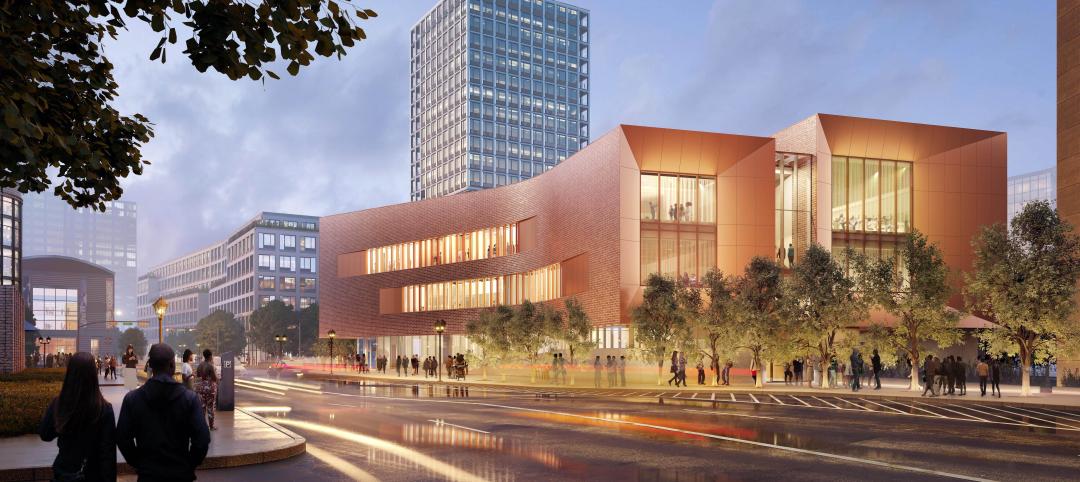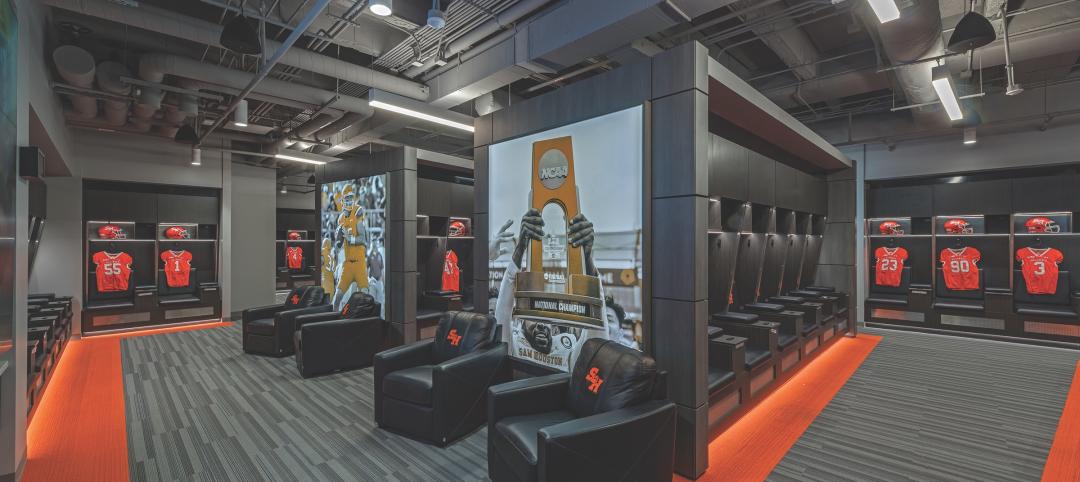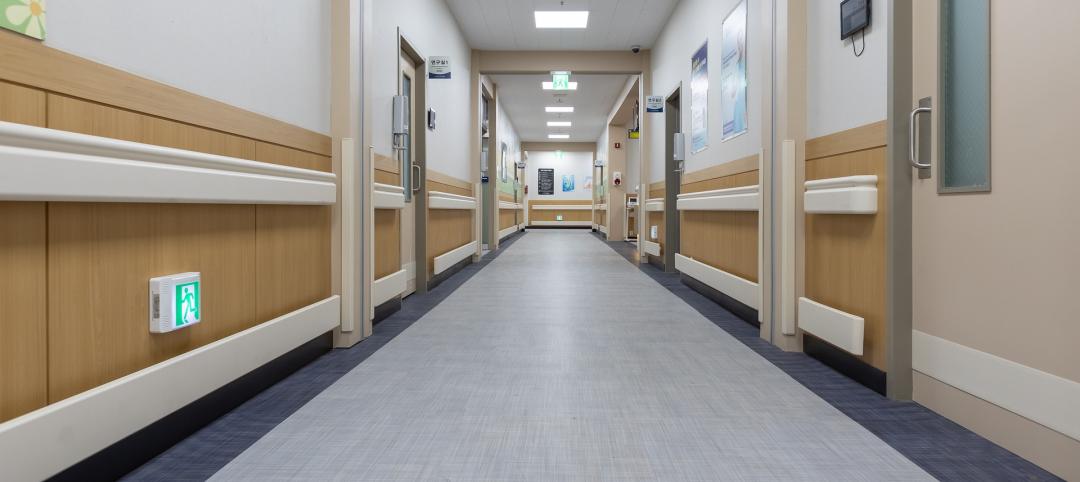Evolving into more comprehensive design-build services was the driver behind CannonDesign’s recent merger with gkkworks, an integrated planning, design, and construction firm.
Founded in 1991, gkkworks employs 120 people in its offices in Irvine, Pasadena, and San Diego, Calif.; Denver; and Pune, India. (CannonDesign has an office in Mumbai.) Its annual revenue ranges from $50 million to $60 million.
Praful Kulkarni, president and CEO of gkkworks, says his goal has been to “create a firm with multiple professionals to customize the design process.” He notes that his company’s progressive design-build delivery model is promulgated on the belief that “architecture and construction are inseparable.”
Kulkarni’s new title at Cannon Design is director of integrated services, focused on advancing the combined firm’s design and construction capabilities.

Praful Kulkurni is now Cannon Design's director of intergated services, focused on the firm's design and construction capabilities. Image: courtesy of Cannon Design
Last year, Fast Company magazine recognized CannonDesign as one of the 10 most innovative architectural firms in the world. CannonDesign became acquainted with gkkworks through a “client connection,” says Brad Lukanic, AIA, LEED AP, CannonDesign’s growth-minded CEO.
Merging with gkkworks expands CannonDesign’s west-coast partnerships and moves the firm into the hospitality sector. Lukanic further explains the rationale behind this merger by stating “we’re finding that the industry is really hungry for alternative delivery methods. When there’s a single source of delivery, fewer mistakes are made.”
Cannon Design got into integrated modular design two years ago. Based on post-occupancy studies that CannonDesign has conducted on those subsequent projects, its delivery model is reducing delivery times by 28%, lowering costs by 20%, and reducing material waste by 30%. Kulkarni observes that these results “rest on involving the construction company at the point of selection.”

Deb Sheehan, Cannon Design's Executive Director-Firmwide Strategies, is looking forward to her company working earlier with subs and suppliers. Image: Cannon Design
Merging with gkkworks extends CannonDesign’s delivery reach to the supply chain, says Deb Sheehan, CannonDesign’s Executive Director-Firmwide Strategies. The company is already collaborating with GCs, and has started to include large subcontractors such as Hill Mechanical in early design discussions. Sheehan speaks enthusiastically about working sooner with suppliers and subcontractors to get costs down.
When asked why more firms should go the IDP route, Kulkarni cites a U.S. Supreme Court ruling that, he says, set “an impossibly high bar” for the accuracy of design drawings. In any disputes among building team members or with clients, that ruling “became a defensive position.” But when design and construction are integrated, “you no longer have these disputes.”

Since joining Cannon Design in 2016, CEO Brad Lukanic has been acquisition minded. Image: Cannon Design
“I believe our firm can play a vital role in a unified approach, as clients seek integrated solutions that link a project’s design and delivery phases,” says Lukanic. “By breaking traditional boundaries, our firm seeks to delivery every project aspect—from shaping the design experience to final construction.”
Its merger with gkkworks brings to 24 the number of offices Cannon Design operates. Over the next several months, Cannon Design and gkkworks will be combining their respective operations, “especially in California,” says Lukanic.
Related Stories
Adaptive Reuse | Oct 22, 2024
Adaptive reuse project transforms 1840s-era mill building into rental housing
A recently opened multifamily property in Lawrence, Mass., is an adaptive reuse of an 1840s-era mill building. Stone Mill Lofts is one of the first all-electric mixed-income multifamily properties in Massachusetts. The all-electric building meets ambitious modern energy codes and stringent National Park Service historic preservation guidelines.
MFPRO+ News | Oct 22, 2024
Project financing tempers robust demand for multifamily housing
AEC Giants with multifamily practices report that the sector has been struggling over the past year, despite the high demand for housing, especially affordable products.
Performing Arts Centers | Oct 21, 2024
The New Jersey Performing Arts Center breaks ground on $336 million redevelopment of its 12-acre campus
In Newark, N.J., the New Jersey Performing Arts Center (NJPAC) has broken grown on the three-year, $336 million redevelopment of its 12-acre campus. The project will provide downtown Newark 350 mixed-income residential units, along with shops, restaurants, outdoor gathering spaces, and an education and community center with professional rehearsal spaces.
Office Buildings | Oct 21, 2024
3 surprises impacting the return to the office
This blog series exploring Gensler's Workplace Survey shows the top three surprises uncovered in the return to the office.
Healthcare Facilities | Oct 18, 2024
7 design lessons for future-proofing academic medical centers
HOK’s Paul Strohm and Scott Rawlings and Indiana University Health’s Jim Mladucky share strategies for planning and designing academic medical centers that remain impactful for generations to come.
Sports and Recreational Facilities | Oct 17, 2024
In the NIL era, colleges and universities are stepping up their sports facilities game
NIL policies have raised expectations among student-athletes about the quality of sports training and performing facilities, in ways that present new opportunities for AEC firms.
Codes and Standards | Oct 17, 2024
Austin, Texas, adopts AI-driven building permit software
After a successful pilot program, Austin has adopted AI-driven building permit software to speed up the building permitting process.
Resiliency | Oct 17, 2024
U.S. is reducing floodplain development in most areas
The perception that the U.S. has not been able to curb development in flood-prone areas is mostly inaccurate, according to new research from climate adaptation experts. A national survey of floodplain development between 2001 and 2019 found that fewer structures were built in floodplains than might be expected if cities were building at random.
Seismic Design | Oct 17, 2024
Calif. governor signs limited extension to hospital seismic retrofit mandate
Some California hospitals will have three additional years to comply with the state’s seismic retrofit mandate, after Gov. Gavin Newsom signed a bill extending the 2030 deadline.
MFPRO+ News | Oct 16, 2024
One-third of young adults say hurricanes like Helene and Milton will impact where they choose to live
Nearly one-third of U.S. residents between 18 and 34 years old say they are reconsidering where they want to move after seeing the damage wrought by Hurricane Helene, according to a Redfin report. About 15% of those over age 35 echoed their younger cohort’s sentiment.

















